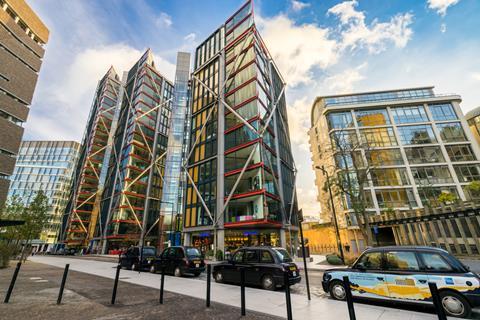Supreme Court decision could spark new challenges and affect provision of public viewing space according to property specialists
The Supreme Court’s ruling that the public viewing gallery at Herzog & de Meuron’s Tate Modern extension is a “nuisance” to residents of RSHP’s nearby Neo Bankside apartment scheme is likely to have wider implications for development, property lawyers have said.
One area of particular exposure are projects that feature public viewing space, if that offer is not the primary purpose of the building. The provision of such space in new high-rise buildings has been actively promoted by the City of London Corporation in recent years.
In a decision handed down yesterday, the nation’s top appeal court said lower courts had been wrong not to categorise hundreds of thousands people using Tate Modern’s 10th floor viewing gallery as posing a nuisance to inhabitants of the nearby high-end Southwark scheme.

The Supreme Court said the ruling effectively reviewed the “core principles” of the law of nuisance, which categorises nuisance as a use of land that wrongfully interferes with the ordinary use and enjoyment of neighbouring land.
A summary of the Supreme Court’s decision said the interference must be “substantial” and that claims could not be successful if a defendant was doing nothing more than making “common and ordinary use” of their own land.
However, it also said that once nuisance had been established, it was no answer for a defendant to say that they were using their land “reasonably” or in a way that was “beneficial to the public”.
In the case of the Tate Modern, the Supreme Court said inviting members of the public to admire the view from a viewing platform was not a “common and ordinary” use of the Tate’s land, even in the context of operating an art museum in a built-up area of south London.
It said the Tate was liable to the claimants for the nuisance caused, and sent the case back to the High Court for the remedy to be decided.
Martin Thomas, a real estate partner at law firm Gowling WLG, said the case made it clear that visual intrusion could be a nuisance, and made a connection between an “actionable nuisance” and activities that were outside of the “ordinary use” of a building.
“This decision will have an important impact for buildings which have public spaces such as viewing galleries which are not directly connected to the use of the property,” he said.
“A London Eye-esque building is OK, but art galleries, museums or restaurants with ancillary viewing platforms will need to re-consider their position.”
Thomas added that the Supreme Court ruling did not count the fact that Neo Bankside residents had bought new homes with glass wintergardens in a prominent urban location against them.
“The fact that the neighbours should have known interference would have been possible when purchasing flats with floor to ceiling glass walls was not a defence to the nuisance,” he said.
James Souter, partner and land specialist at law firm Charles Russell Speechlys, said the Tate Modern decision was a “landmark moment” for extending the law of nuisance to protect against visual intrusion.
“Looking ahead, it will be interesting to see whether this case triggers more property owners to make similar claims where they feel they are being over-looked,” he said.
“The Supreme Court has made it clear that the circumstances where the new law will be applied will be rare but did highlight issues around CCTV and sharing of images from camera phones on social media.”























No comments yet